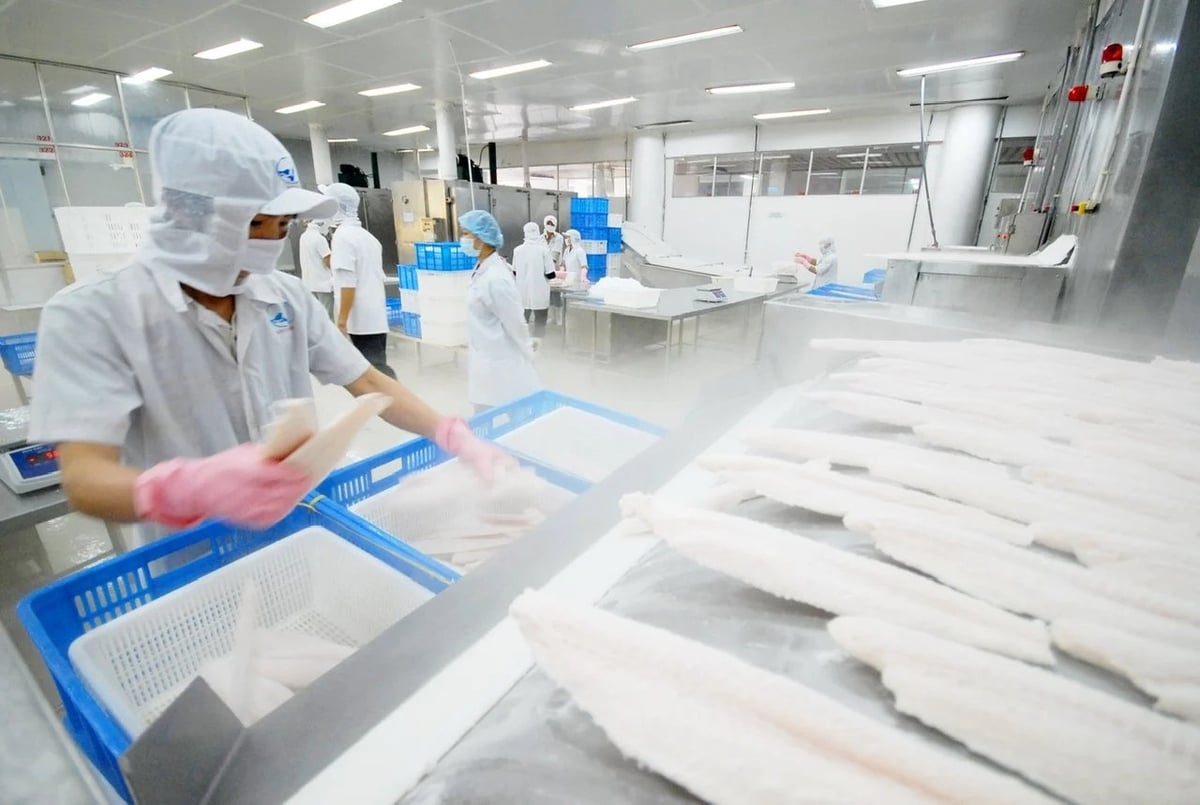November 19, 2025 | 11:30 GMT +7
November 19, 2025 | 11:30 GMT +7
Hotline: 0913.378.918
November 19, 2025 | 11:30 GMT +7
Hotline: 0913.378.918
The Vietnam Trade Office in Singapore, citing statistics from the Accounting and Corporate Regulatory Authority of Singapore, reported that Singapore’s total seafood import value from global markets in the first three months of 2025 reached nearly SGD 283.6 million (1 SGD = 0.76 USD), a slight increase of 1.1% compared to the same period in 2024.
Seafood consumption demand in the Singapore market is relatively evenly distributed across four main categories: fresh/chilled fish (excluding fish fillet and fish meat), frozen fish (excluding fish fillet and fish meat), chilled/frozen fish fillet and fish meat, and crustaceans (whether processed or unprocessed). In the first three months of 2025, the import value of each group exceeded SGD 50 million (around SGD 17 million/month).

Vietnam is currently the fourth-largest seafood supplier to the Singapore market. Photo: Hong Tham.
In addition to the four main categories, statistical data also shows that Singapore’s market has a demand for imports of live fish; processed fish; molluscs (whether processed or unprocessed); and other aquatic invertebrates (excluding crustaceans and molluscs), whether processed or unprocessed.
Vietnam is now the fourth-largest seafood supplier to the Singapore market, holding the highest market share for the chilled/frozen fish fillet and fish meat category. This is the first time Vietnamese seafood has entered the top four exporters to Singapore, following Malaysia, Indonesia, and Norway.
To support Vietnamese seafood businesses in finding and expanding alternative markets to the U.S. — which has been impacted by tariff issues — the Vietnam Trade Office in Singapore held a meeting with the leadership of the Vietnam Association of Seafood Exporters and Producers (VASEP) in early April 2025.
At the meeting, both sides agreed to continue collaborating in providing market information; connecting seafood businesses between Vietnam and Singapore; strengthening trade promotion activities; participating in seafood fairs and exhibitions in Singapore; and increasing the presence of Vietnamese goods in Singapore to help businesses seek new partners and expand the market share of Vietnamese seafood products there in the coming time.
The Trade Office also assessed that in the near future, Singapore’s seafood import market size is expected to remain stable, and Vietnam is likely to continue maintaining a strong market share, especially in the chilled/frozen fish fillet and fish meat segments.
The Vietnam Trade Office in Singapore recommends that Vietnamese seafood businesses prioritize maintaining good product quality control, regularly updating local regulations, refining product packaging designs, and enhancing product quality and productivity to increase competitiveness against products from other countries in the region.
Translated by Hoang Duy
/2025/11/18/2431-0-161627_248.jpg)
(VAN) Viet Nam accounts for 43% of the world's export volume of Robusta coffee. However, the Vietnamese Robusta coffee brand has yet to gain broad recognition on the global market.
/2025/11/18/5617-2-125215_406.jpg)
(VAN) The consumption demand for premium, healthy, and cold-brew tea products is rising globally, including in the Thai market, opening new opportunities for Viet Nam.

(VAN) The 3F+ model aims for selective resource management, regenerative protection, green education and consumption, all intrinsic to Dabaco’s sustainable development strategy.

(VAN) Carefully packed tea bags, neatly arranged inside containers, begin their 5,000-kilometer journey to Afghanistan, carrying with them the aroma of mountain forests and the pride of Lai Chau province.

(VAN) 'If we can address disease challenges and properly plan farming zones, Vietnamese shrimp can absolutely rise to lead the world,' Mr. Le Van Quang affirmed.

(VAN) The year 2025 continues to mark a significant footprint for Chanh Thu Fruit Import-Export Group Joint Stock Company (Chanh Thu Group) in the international market.

(VAN) Participating in the exhibition celebrating the 80-year tradition of the Agriculture and Environment sector, Dong Giao Food Export Joint Stock Company (DOVECO) showcased a range of products utilizing new technologies.